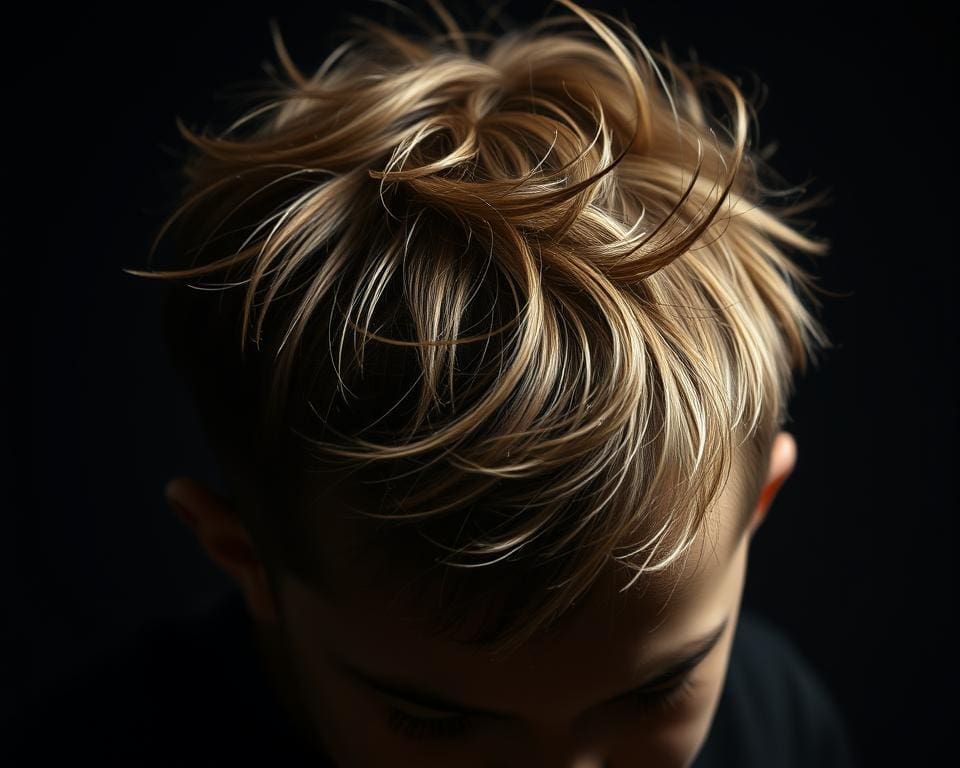In an age where technology intertwines with every aspect of our lives, the beauty industry is no exception. The rise of machine learning presents an exciting frontier in combating the fears surrounding hairstyle errors and bad haircuts. Imagine a sophisticated algorithm analysing your unique features and preferences to predict potential haircut pitfalls. With the help of advanced data analysis and personalised algorithms, individuals can make informed decisions about their hairstyles, thus minimising the chances of disappointment. As we explore the innovations in hair prediction technology, it becomes clear that machine learning might just be the key to transforming our haircare experience.
The Role of Machine Learning in Hair Analysis
Machine learning is transforming hair analysis through sophisticated algorithms that provide new insights into hairstyle predictions. By harnessing the power of data, hairstylists and individuals alike can make informed decisions regarding their hair choices.
Understanding Machine Learning Algorithms
The heart of machine learning lies in its algorithms, which are designed to learn patterns from data. Neural networks and decision trees are among the popular algorithms used in hair analysis. These algorithms process vast amounts of historical haircut data, revealing trends and preferences, which helps in predicting hairstyles that complement personal styles and features. The advancement in algorithms enhances the ability to interpret complex datasets, leading to more accurate recommendations in hair prediction.
How Data Influences Hair Prediction
The influence of data on hair prediction cannot be understated. Variables such as hair texture, colour, and previous haircut outcomes play crucial roles in shaping recommendations. Comprehensive datasets allow algorithms to refine their predictions based on individual preferences and emerging trends. The combination of big data and effective machine learning algorithms offers a promising avenue for those seeking the perfect hairstyle, erasing the guesswork and enhancing satisfaction.

Can machine learning predict your next bad haircut?
The intersection of machine learning science and hairstyling presents an exciting frontier in personal grooming. By analysing historical data and current trends, machine learning algorithms can effectively predict bad haircuts, offering tailored solutions for individuals based on their unique hair characteristics. This approach not only enhances the client experience but also serves as a practical application of statistical analysis in the beauty industry.
The Science Behind Haircut Predictions
Understanding how haircut predictions are formulated requires a look into the methodologies used by these algorithms. Machine learning employs vast datasets, including user hair types, previous styles, and even geographical influences on hair fashion, to identify patterns. With such data, the analysis infers which hairstyles suit certain individuals, potentially preventing future hair mishaps.
Utilising these insights, users can input their personal details into various apps designed for this purpose. The outputs suggest hairstyles that align well with their profiles, transforming the way people approach their next haircut. These scientifically-informed choices can lead to increased satisfaction and confidence, illustrating the profound psychological benefits of informed hair decisions.
The Impact of Artificial Intelligence on Hairstyle Choices
Artificial intelligence is revolutionising the beauty industry, particularly in how consumers approach their hairstyle choices. The integration of AI in beauty has enabled personalised consultations that guide individuals towards styles that best suit their unique features. This transformation not only empowers clients but enhances their overall haircare experience.
Modern Trends in AI and Beauty
Recent innovations have paved the way for AI-driven tools that assist hairstylists and clients alike. Many salons now utilise AI technology for:
- Virtual hairstyle try-ons that allow clients to preview new looks before committing.
- Data analysis tools that understand and predict customer preferences based on historical choices.
- Personalised product recommendations tailored to individual hair types and conditions.
The trend towards AI in beauty signifies a shift towards more informed decision-making in hairstyle choices, ensuring that customers can shop confidently for their hair needs.
Success Stories of AI in Haircare
Numerous brands have embraced artificial intelligence, leading to remarkable haircare success stories. Companies such as L’Oréal have developed apps that employ AI to analyse hair conditions and recommend appropriate care routines. These applications have shown significant improvements in customer satisfaction, resulting in a decline in hairstyle mishaps.
Testimonies from users indicate a newfound confidence in their hairstyle decisions, attributing their satisfaction to enhanced guidance provided by AI tools. This intersection of technology and beauty continues to reshape how individuals engage with their hair, paving the way for a more empowered and stylish future.
Factors Contributing to Bad Haircuts
Choosing the right hairstyle can be a daunting task. Many fall into common hairstyle missteps that lead to bad haircuts. Recognising these pitfalls is essential for anyone looking to achieve their desired look. A lack of clear communication with stylists often tops the list of issues. Often, clients have a vision in their heads that does not translate well during the consultation. The use of vague descriptions or misleading references can result in outcomes that are far from expected.
Common Missteps When Choosing a Hairstyle
Several common mistakes contribute significantly to unsatisfactory hair experiences. Not all styles suit every person, and neglecting to consider individual hair types can prove disastrous. Here are some frequent problems seen in salons:
- Failing to bring visual references may lead to misinterpretation of what one wants.
- Ignoring the suitability of a style based on hair texture and type consistently results in dissatisfaction.
- Omitting a detailed consultation with a stylist risks misalignment between client expectations and stylist capabilities.
Understanding Individual Hair Types and Styles
Every individual has unique hair characteristics which should guide styling decisions. Understanding one’s hair type can be enlightening, helping to avoid the traps laid by bad haircuts. Recognising the texture, density, and growth patterns empowers individuals to make informed choices about their hairstyles. The relevance of choosing a style that enhances natural curls, waves or straight textures cannot be overstated. Originality in styling should align with personal hair attributes rather than conforming to trending styles that may not suit everyone.
Analysis of Prediction Accuracy in Hair Forecasting
In the fascinating world of hair forecasting, the analysis of prediction accuracy plays a pivotal role. Understanding how well machine learning systems forecast hairstyles can significantly influence choices and improve user experiences. Employing diverse metrics allows for a comprehensive evaluation of these predictions, shedding light on both strengths and weaknesses.
Metrics for Evaluating Predictions
Accurate evaluation of prediction accuracy relies on several vital metrics. The most commonly used include:
- Precision: This metric gauges the proportion of true positive results in relation to the overall positive predictions made.
- Recall: Understanding how many of the actual positive cases have been successfully identified entails this measurement.
- User Satisfaction Rates: Surveys and feedback provide direct insights into how users perceive the effectiveness of predictions.
Evaluating these metrics allows hair forecasting technologies to refine their predictions and minimise the risk of hairstyle mistakes, ensuring better results for users seeking their ideal look.
Case Studies in Hairstyle Mistakes
Examining real-life instances of hairstyle mistakes can reveal how prediction accuracy may falter. Consider the case of a popular hair app that miscalculated a user’s ideal hairstyle based on outdated data, leading to a disappointing haircut experience. Another instance involved a user following computer-generated suggestions that did not consider individual hair texture and attributes, resulting in an unsatisfactory outcome. Such examples illustrate the importance of continual improvement in algorithms and the accuracy of predictions.
These case studies underline the necessity for enhanced understanding and fine-tuning of metrics associated with hair forecasting. Attention to detail and ongoing analysis can empower technology to deliver more reliable predictions, ultimately reducing the occurrence of hairstyle mistakes.
Tools and Apps Harnessing Machine Learning for Hair Prediction
In the ever-evolving world of hairstyling, innovations in technology continue to enhance how individuals approach their hair decisions. Numerous hair prediction tools emerging in the UK market utilise advanced machine learning techniques to tailor recommendations that resonate with personal styles and preferences. These hair analysis apps not only provide insights into suitable hairstyles but also improve confidence in making those choices.
Popular Hair Analysis Applications
Several standout applications epitomise the integration of AI applications in haircare. Each offers unique features that cater to various needs:
- Hair Advisor: This app allows users to upload images and receive tailored hairstyle suggestions based on their facial features and hair texture.
- Style My Hair: Utilising augmented reality, this app enables individuals to try on hairstyles virtually, helping them visualise changes before committing.
- Modiface: Renowned for its accurate virtual try-on capabilities, Modiface analyses user images, providing a plethora of hairstyle options that match personal preferences.
These hair analysis apps harness machine learning algorithms to create robust databases that learn from user interactions. As users engage with the recommendations, the tools refine their insights, ensuring a more customised experience over time. Each application plays a vital role in helping individuals navigate the complexities of hairstyle choices, ultimately guiding them away from potential missteps and assisting in the journey towards achieving their desired looks.
Expert Insights on Machine Learning and Haircare
In the evolving world of haircare, expert insights from both hairstylists and data scientists illuminate the transformative effect of machine learning on the industry. Conversations with these professionals reveal how technology changes not only the practical aspects of hairstyling but also the artistic process itself. Their perspectives offer a glimpse into the future of personal grooming.
Interviews with Hairstylists and Data Scientists
Through insightful interviews, hairstylists share their experiences in adapting to advancements in AI, emphasizing the balance between technology and creativity. Many agree that integrating AI in salons enhances their ability to personalise services. Likewise, data scientists articulate how predictions based on extensive data sets can provide hairstylists with valuable insights into client preferences and hair types. These collaborations foster a stronger connection between artistry and technology.
Real-World Applications of AI in Salons
The integration of AI in salons manifests through various real-world applications. Innovations such as virtual hair consultations allow customers to visualise potential hairstyles before making a commitment. This technology increases client satisfaction and confidence in their choices. Other applications include AI-driven inventory management systems, which streamline operations and ensure that hairstylists have the right products available. These advancements signify a new era where AI in salons boosts efficiency and enhances the overall client experience.
The Future of Hairstyle Forecasting Technology
The future of hairstyling is poised for remarkable advancements, driven by innovative forecasting technology. As the beauty industry continues to embrace augmented reality, consumers may soon enjoy personalised hairstyle recommendations that consider their unique features and preferences. This immersive experience will not only enhance client engagement but also foster a deeper connection between clients and their stylists, elevating the overall haircare experience.
Additionally, the integration of machine learning into stylist training represents another significant stride forward. As stylists harness these sophisticated tools, they will gain insights into emerging trends in hair prediction, positioning them to offer cutting-edge styles that align with the latest fashion developments. The potential for continuous learning algorithms to adapt and refine their forecasts based on real-time data means that hairstyling can become more fluid and responsive to changing consumer desires.
Ultimately, the optimism surrounding AI and machine learning in the realm of hairstyling not only resonates with industry professionals but also inspires confidence among consumers across the United Kingdom. With the evolution of these technologies, we can expect a future where personalised, data-driven hairstyle choices become the norm, transforming the way we perceive and experience hairdressing.









